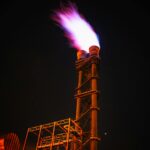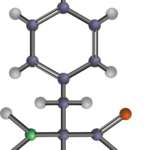Flow measurement is a critical task in industries that handle slurries—mixtures of solid particles suspended in a liquid medium. Slurries are commonly encountered in sectors such as mining, wastewater treatment, pulp and paper, chemical processing, food and beverage, and energy production. However, measuring the flow of slurries presents unique challenges, primarily due to the abrasive nature, varying density, viscosity, and non-homogeneous consistency of these mixtures. To achieve accurate flow measurement in these settings, it is essential to choose the right type of flow meter.
In this article, we will explore the different types of flow measurement devices that are most suitable for slurries, their working principles, advantages, limitations, and best applications. By understanding the characteristics of slurries and the capabilities of various flow meters, industries can make informed decisions to ensure optimal flow measurement and process control.
Challenges in Slurry Flow Measurement
Slurry flow measurement is challenging due to several factors that differentiate slurries from pure liquids. These challenges include:
- Abrasiveness: Solid particles in the slurry can cause erosion and wear on measuring devices, reducing their lifespan.
- Non-homogeneity: Slurries often have uneven distribution of solid particles, making it difficult to measure flow accurately if the flow is not well-mixed.
- High viscosity: Some slurries have high viscosity, which can affect the performance of certain flow meters.
- Density variations: Slurries can have different densities, especially when the solid content fluctuates, which can affect the accuracy of some flow measurement technologies.
Given these complexities, selecting the appropriate flow meter is crucial for accurate measurement, long-term reliability, and low maintenance costs.
1. Electromagnetic Flow Meters (Magmeters)
How It Works:
Electromagnetic flow meters, or magmeters, operate based on Faraday’s Law of electromagnetic induction, which states that a voltage is induced when a conductive fluid passes through a magnetic field. The magnitude of this voltage is proportional to the flow velocity of the slurry. A pair of electrodes in the meter detects the induced voltage, and the flow rate is calculated based on the velocity and the cross-sectional area of the pipe.
Best For:
Magmeters are particularly effective for electrically conductive slurries, such as those found in industries like mining, wastewater treatment, and chemical processing. Examples include slurries of water with mineral particles or slurries containing dissolved chemicals.
Advantages:
- No moving parts: The absence of moving parts reduces wear and tear, making electromagnetic flow meters highly durable and low-maintenance.
- Accurate: They provide precise flow measurement even in slurries with high solid content or varying viscosities.
- Versatile: Can handle slurries with high concentrations of solids, making them ideal for a wide range of slurry types.
- Non-invasive: Since there are no mechanical parts in contact with the slurry, electromagnetic flow meters are less prone to damage from abrasive solids.
Limitations:
- Requires conductivity: The slurry must be electrically conductive. Non-conductive slurries such as oils or polymer slurries cannot be measured with this type of flow meter.
- Pipe size considerations: Magmeters may be less effective for measuring very small or very large pipe diameters.
Applications:
Magmeters are widely used in mining, pulp and paper industries, and wastewater treatment, where slurries are often water-based and electrically conductive.
2. Coriolis Flow Meters
How It Works:
Coriolis flow meters measure the mass flow rate by detecting the deflection of a vibrating tube that is set in motion by the slurry flow. When the slurry enters the vibrating tube, the flow causes a change in the vibration pattern, which is measured and converted into a flow rate. Coriolis meters are particularly valuable for measuring mass flow directly, and they can also measure density and temperature, making them versatile tools.
Best For:
Coriolis meters are ideal for slurries with varying densities or those containing materials that can change viscosity or solid content over time.
Advantages:
- Direct mass flow measurement: Coriolis meters measure mass flow, meaning they account for changes in slurry composition or density.
- Highly accurate: They are capable of providing very accurate flow measurements, even in non-homogeneous slurries.
- Versatile: They can be used with a variety of slurry compositions, including those with large or irregular particle sizes.
- Multivariable measurement: Coriolis meters often offer simultaneous measurement of density and temperature, providing more comprehensive data for process control.
Limitations:
- Expensive: Coriolis meters tend to be more expensive than other types of flow meters.
- Wear and tear: Due to the high velocity of the slurry and the potential for abrasive particles, Coriolis meters can experience wear, especially with highly abrasive slurries.
Applications:
These meters are commonly used in industries like chemical processing, food and beverage, and pharmaceuticals, where high accuracy and reliable mass flow measurement are critical, especially for variable slurries.
3. Ultrasonic Flow Meters
How It Works:
Ultrasonic flow meters operate by transmitting high-frequency sound waves through the slurry. There are two main types of ultrasonic meters:
- Transit-time ultrasonic meters: Measure the difference in time for ultrasonic signals to travel upstream and downstream through the slurry. The difference in travel times is proportional to the flow rate.
- Doppler ultrasonic meters: Measure the frequency shift of sound waves reflected from particles or bubbles in the slurry. This shift is proportional to the velocity of the slurry flow.
Best For:
Ultrasonic meters are suitable for slurries with suspended solid particles or those that may have air bubbles, such as slurries in wastewater treatment and certain mining applications.
Advantages:
- Non-invasive: Ultrasonic meters do not require direct contact with the slurry, making them ideal for handling corrosive or abrasive fluids.
- Flexibility: They can be used to measure a wide range of slurry compositions, including those with suspended solids.
- Low maintenance: With no moving parts, ultrasonic flow meters are generally low-maintenance.
Limitations:
- Accuracy issues: Ultrasonic meters may be less accurate when the slurry contains very high concentrations of solids or when the particle size is large.
- Sensitivity to flow conditions: The performance of Doppler meters can be compromised if the flow is not properly turbulent or if there are too few particles to reflect the sound waves.
Applications:
Ultrasonic meters are often used in industries such as mining, water treatment, and power generation, where slurries contain suspended solids or gases.
4. Vortex Flow Meters
How It Works:
Vortex flow meters measure the flow rate by detecting the frequency of vortices (swirling patterns) shed by a bluff body placed in the slurry flow path. The frequency of vortex shedding is proportional to the flow velocity, and from this, the flow rate is determined.
Best For:
Vortex meters are best suited for slurries with moderate concentrations of solids and relatively stable flow conditions.
Advantages:
- Durable and reliable: Vortex meters are rugged, with no moving parts, making them ideal for harsh environments.
- Versatile: They can handle a wide range of slurry compositions, including both liquids and slurries.
- Easy to install and maintain: Vortex meters are relatively simple to install and require minimal maintenance.
Limitations:
- Performance degradation with high solid content: Vortex meters may become less accurate when dealing with high concentrations of solids or very large particle sizes.
- Susceptibility to low flow rates: At very low flow rates, vortex meters may be less accurate or fail to detect flow reliably.
Applications:
Vortex flow meters are used in industries such as chemical processing, oil and gas, and water treatment, where the slurry has moderate solid content.
5. Rotary Paddle Flow Meters
How It Works:
Rotary paddle flow meters feature a rotating paddle placed in the flow path of the slurry. As the slurry flows, it causes the paddle to rotate, and the rotation speed is directly proportional to the flow rate.
Best For:
Rotary paddle meters are suitable for slurries with coarse or large particles and those that may cause clogging or damage to other types of flow meters.
Advantages:
- Simple design: Rotary paddle meters are cost-effective and easy to install and operate.
- Suitable for large particles: They can effectively measure slurries with large or irregularly shaped solids.
- Durable: These meters are rugged and can handle slurries with high solid content.
Limitations:
- Wear and tear: The moving parts are subject to wear, especially in abrasive slurries, which may require frequent maintenance.
- Accuracy at low flow rates: Rotary paddle meters can be less accurate at very low flow rates.
Applications:
Commonly used in industries such as mining, cement, and pulp and paper, where slurries often contain large, coarse particles.
6. Orifice Plates and Flow Nozzles
How It Works:
Orifice plates and flow nozzles measure the flow rate based on the pressure drop that occurs as the slurry passes through a constriction. The pressure drop is related to the flow velocity and, ultimately, the flow rate.
Best For:
These devices are suitable for high-flow slurry applications or where high-accuracy measurement is not the primary concern.
Advantages:
- Cost-effective: Orifice plates and nozzles are relatively inexpensive and easy to install.
- Durable: These devices are rugged and can handle high-pressure systems.
Limitations:
- Clogging and wear: Solid particles in the slurry can cause clogging, and the orifice plate may become worn over time.
- Maintenance: Regular cleaning and maintenance are required to ensure accurate measurements.
Applications:
Used in mining, chemical processing, and power plants for bulk slurry flow measurement.
Conclusion: Selecting the Right Flow Meter for Slurries
The ideal flow measurement device for slurries depends on the slurry’s composition, particle size, solid content, and the accuracy required. For electrically conductive slurries, electromagnetic flow meters offer reliable and maintenance-free operation. Coriolis flow meters are well-suited for applications that require direct mass flow measurement, while ultrasonic and vortex flow meters offer flexibility for handling suspended solids and varying flow conditions. Rotary paddle meters and orifice plates are simpler, cost-effective solutions for bulk flow measurement but may require more maintenance in abrasive slurry environments.
By carefully evaluating the specific characteristics of the slurry and the requirements of the application, industries can choose the best flow measurement device to ensure accurate, reliable, and efficient operation.















